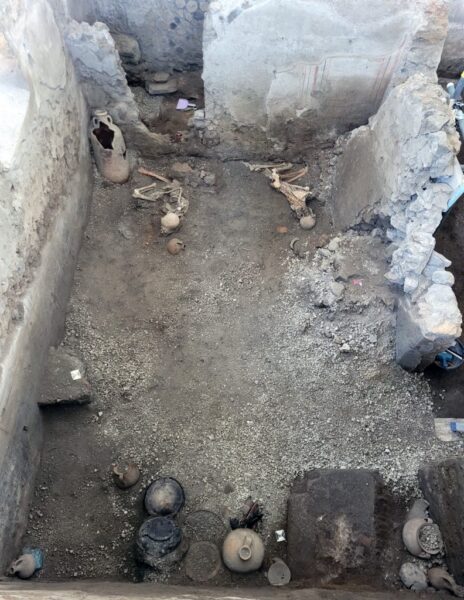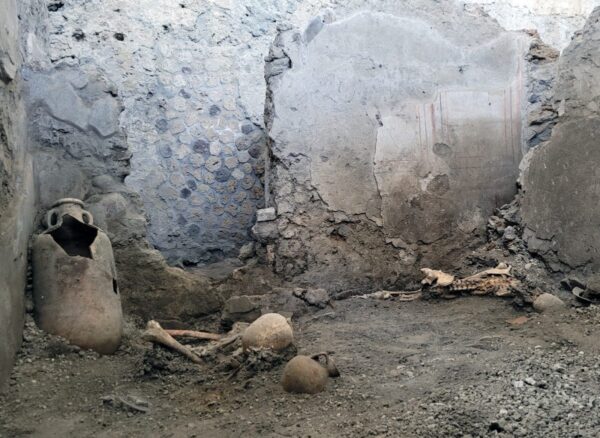The eruption of Mount Vesuvius in 79 AD has become the most famous volcanic eruption in history. This is largely thanks to Pompeii, the Roman city destroyed during the eruption and frozen in time, every resident cast in the position they perished in. But now, archaeologists have discovered two citizens of Pompeii that the eruption did not kill. It seems that two natural disasters struck the city at the same time.
During the eruption of Vesuvius, earthquakes also tore through the city. Italian archaeologists now believe that the eruption did not kill everyone. Some died from the earthquakes.

Photo: pompeiisites.org
The Roman historian Pliny the Younger witnessed the eruption from a distance. His is the only first-hand account we have of the event. In his letters, he speaks of earthquakes, but there has been no evidence of them killing people until now.
“[The] earthquakes…that night became so intense that everything seemed not only to be shaken but overturning,” he wrote. “It was the first hour of the day, but the light was still faint and weak…The chariots we had ordered to be brought out, though on level ground, were shaken back and forth and did not remain steady in their places, even wedged with stones.”
Until now, archaeologists have struggled to distinguish between damage caused by the earthquakes and the volcano because of the scale of the damage. The remains of two men have changed this.

Pyroclastic flow down the Mayon volcano, Philippines, 1984. Photo: Wikipedia
Disaster puzzle
Experts agree the cataclysmic event at Pompeii had two main stages. First, ash clouds and pumice hit the city, caving in roofs and suffocating the townspeople. Then came the pyroclastic flow, a scalding hot cloud of gas and volcanic material. The mystery is when the earthquakes occurred.
“These complexities are like a jigsaw puzzle in which all the pieces must fit together to unravel the complete picture,” said archaeologist Domenico Sparice.

Photo: pompeiisites.org
The two men, both around 55, took shelter in a large house in the city’s center. Neither show signs of asphyxiation or dying from the immense heat. Instead, both died from blunt force caused by the collapse of the building they were in. Their skeletons show several bone fractures.
The researchers excavated the room where the skeletons were found, then carefully analyzed the layers of ash and pumice to untangle what occurred within the room. It turns out that the men’s deaths occurred before the pyroclastic flow that entombed Pompeii.
“It was not just the collapse of structures associated with the accumulation of pumice or the impact of pyroclastic flows that represented the only dangers to the…inhabitants of ancient Pompeii,” concluded the archaeological team in a statement.






